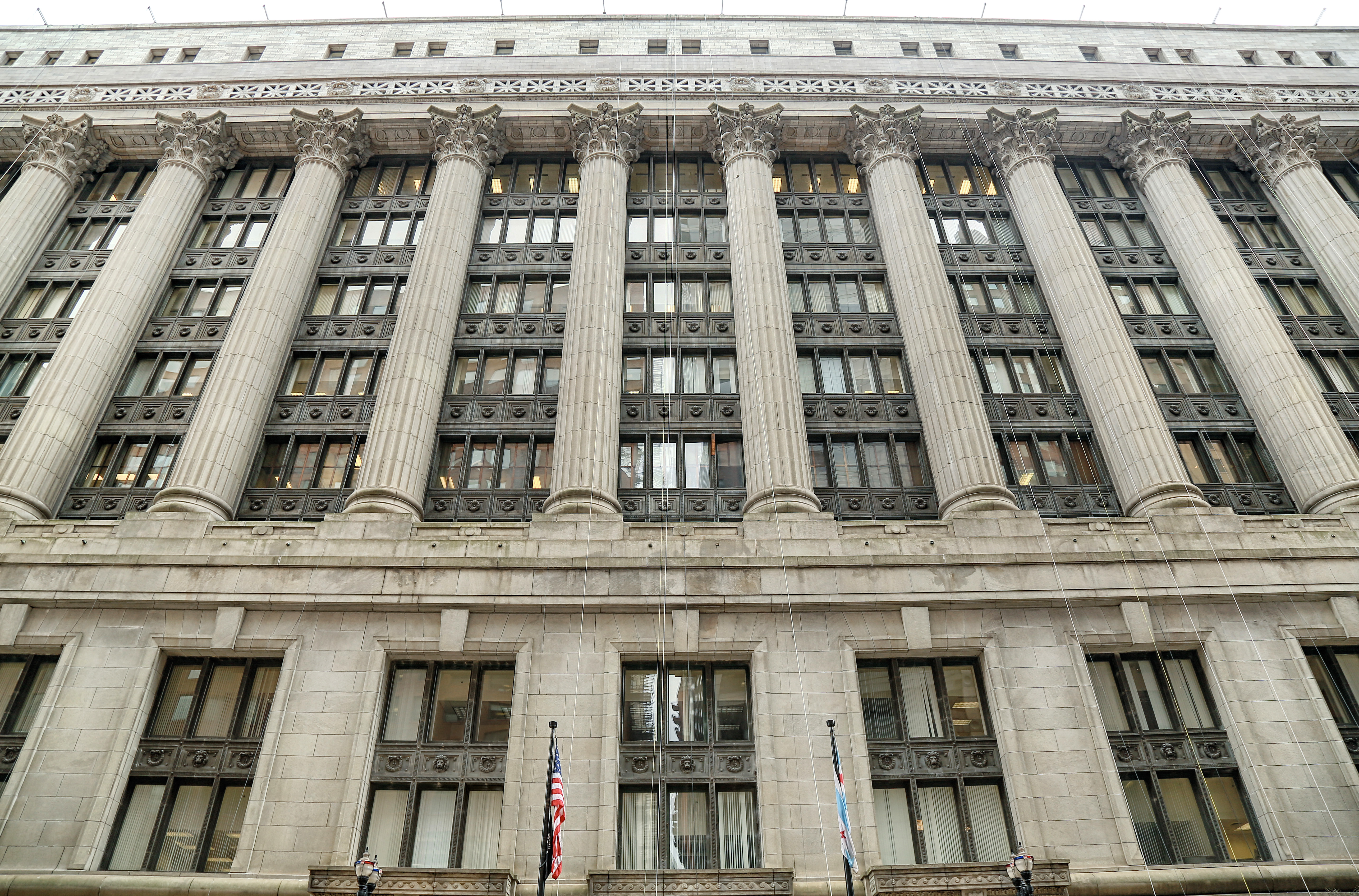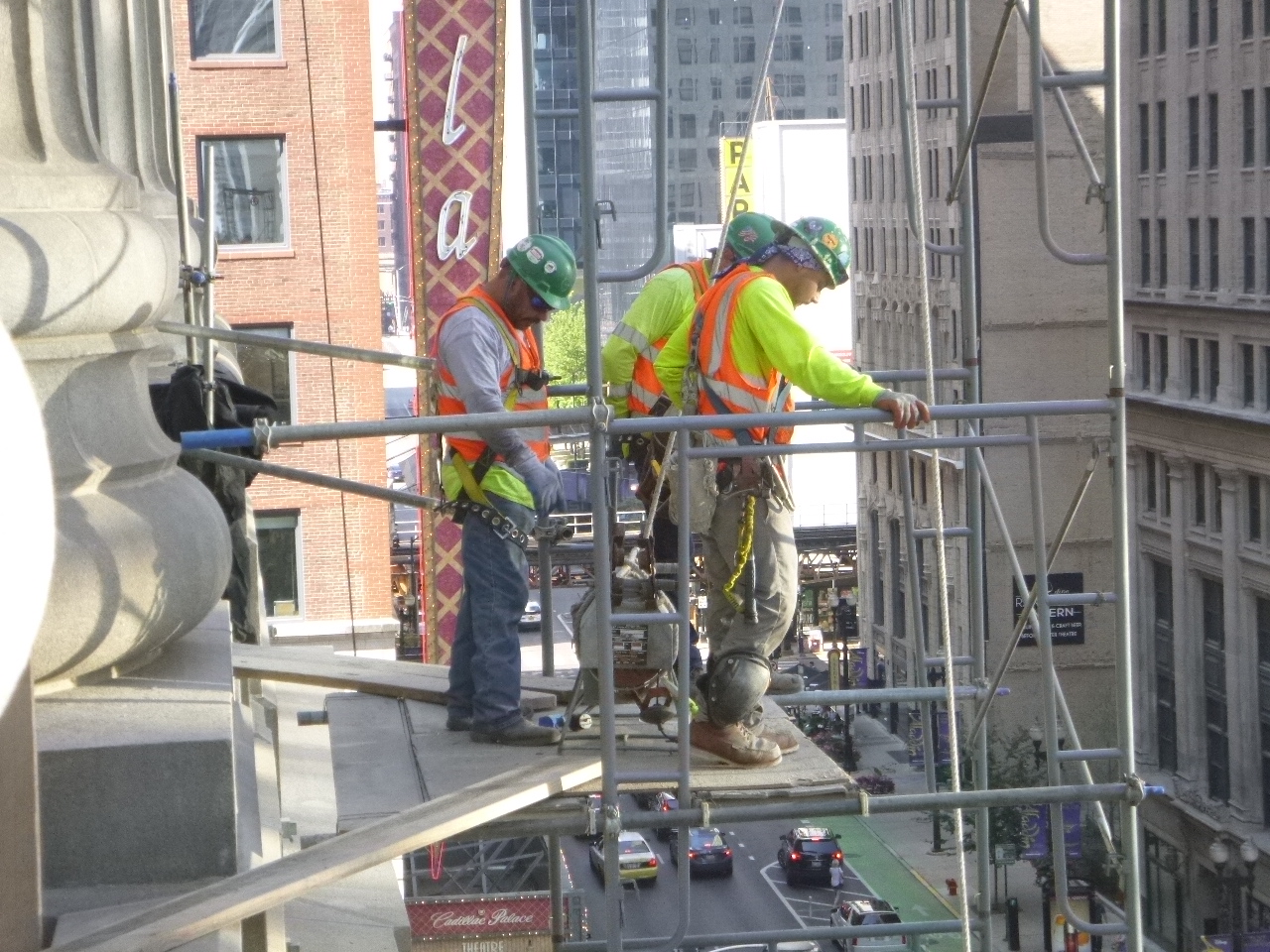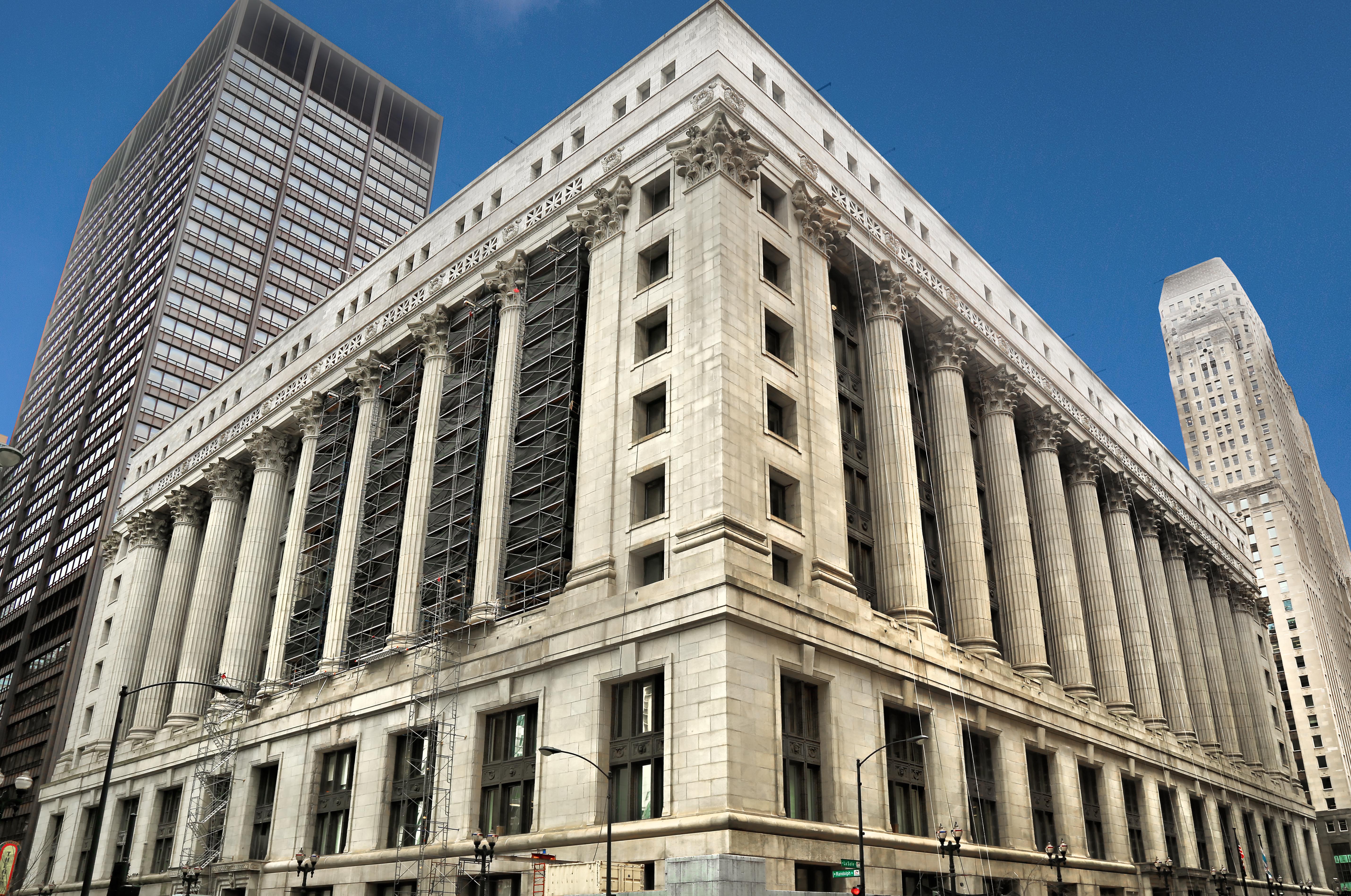City Hall – Chicago
Architect: Bauer Latoza Studio
Owner: City of Chicago
Time Frame: 14 Months
Value: $9,400,000.00
Located in the heart of downtown Chicago, City Hall is an 11-story building constructed in the Greek revival-style and was completed in 1911. The exterior façade is adorned with granite and matte-glazed green and gray terra cotta throughout. Massive vertical columns extend from the fourth to the ninth floor and dark green matte-glazed terra cotta spandrels surround the building’s wood windows.
The inner courtyard walls are clad with white glazed header-bonded brick with white-glazed terra cotta window surrounds supported by steel shelf angles. After decades of weather exposure, the exterior masonry had begun to
deteriorate and required a thorough rejuvenation. In total 6000 LF of brick parapet wall was demolished to the roof line then rebuilt 3 courses higher accommodating the new roofing system. 34,000 sqft of masonry buttresses were demoed to expose structural steel columns for inspection. Steel that was in perfect condition remained in-place but was freed from any rust, painted and flashed to ensure additional longevity. Steel that had eroded over time, rusted or delaminated was logged and inspected by a structural engineer who then instructed our team to repair the existing or replace it with new steel. A small dedicated team of bricklayers, led by an iPad-equipped foreman, worked in conjunction with the structural engineer and the management team to document, catalog and address all needed steel work. 5,400 lineal feet of lintels needed to be repaired, primed, painted and flashed before being enclosed in new brick. 163,000 square feet of grinding and tuckpointing was performed 18,700 LF of flashing was installed and over 1.1 million new brick were laid. In addition to the extensive brickwork, tuckpointing and steel repairs, 15,000 pieces of terra cotta were removed from the façade. Each piece was meticulously inspected, photographed, inventoried and stored for reinstallation.Pieces that were damaged beyond repair required duplication. That process involved casting a mold from an existing piece then replicating its profile-shape in cast stone material. There was a total of 2,406 pieces requiring reproduction. Another 1,530 damaged pieces were repaired, using a cementitious repair mortar, in an on-site workshop that was dedicated to terra cotta repairs. The newly repaired pieces and the cast-stone duplicates were then reinstalled and painted with custom, multi-colored coatings to match the existing terra cotta’s look and finish. The foremen worked diligently with the management team to create real-time as-built drawings so that at any given moment the status and location of one or more pieces of terra cotta could be had within minutes. This allowed the G.C. and owner’s rep to sign off on allowance quantities with certainty and ease. Finally, the statistics of this project are impressive on their own. But they they’re even more impressive when you consider that in 16 months there were no lost-time incidents were recorded, and this work was performed on a fully occupied building. Except for the regularly scheduled academic calendar breaks, classes and extracurricular activities continued all day, during every phase of this restoration.






